User guide
This user manual introduces some of the core functionality that SciLag provides. The guide is by no means exhaustive but should allow the reader to get a taste of what to expect upon joining this website.
1. How to register
Creating an account on SciLag is free and easy. Follow the registration link on the top-left corner of the screen (see the image below) and fill out the registration form. Once you complete that form and submit your data, our system will automatically send an email containing a secure link for email verification. Using that link, you can confirm your email address. If your affiliation email matches any of the domain names on our list of institutional addresses, then the system will verify your account automatically; otherwise, your account will need a manual confirmation from our side. Users with confirmed profiles gain access to data generation tools of the platform. The verification mechanism mentioned above is one of the several measures we take to ensure the quality of the content generated on this website.

Creating a free account on SciLag offers several benefits, including
- posting open problems stemming from your research,
- creating and maintaining your list of publications with a detailed description,
- getting statistics on how the community interacts with your posts,
- etc.
2. Updating your profile and list of publications
Your profile has several sections including your personal information (accessible to you only), your list of publications, list of problems and solutions you posted, and several other folders describing your interaction with the existing profiles and the data.
2.A. Your list of publications
After confirmation of your account (either automatically or manually) you can create a list of your publications and provide an overview (can be the abstract of the paper or a short self-review) for each of your publications with the help of our online TeX editor. Your publications will be displayed in separate blocks as seen in the image below.
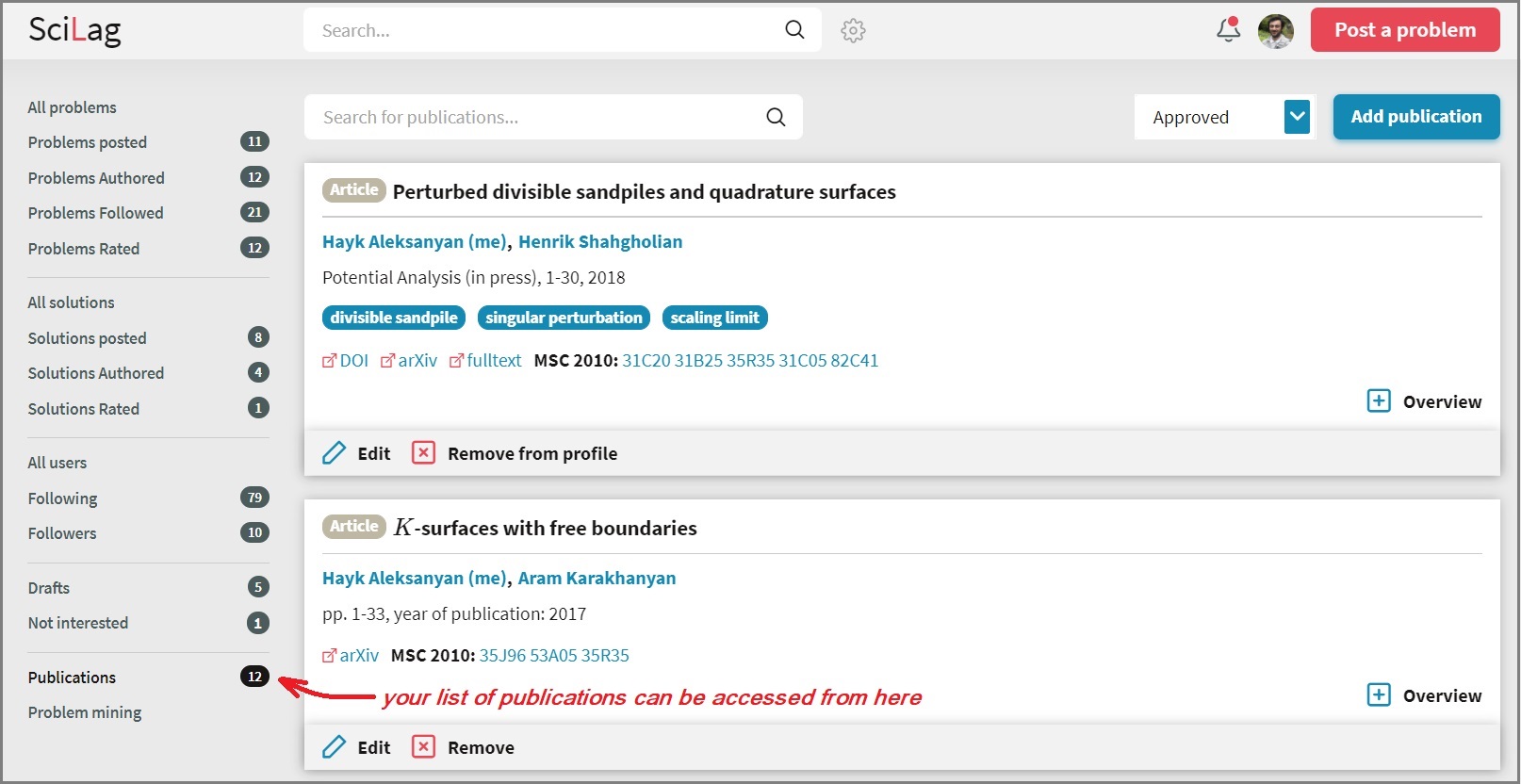
You can either add publications manually one by one or use our bulk upload functionality if you have your publications in BibTex standard that is used in MathSciNet or Google Scholar for example. Such bulk upload provides a streamlined way for creating a list of publications.
You can always edit the details of a publication you added or remove a publication from your list.
Another source of a publication that may appear on your profile is from your collaborators' profiles. Once they add a publication on their profiles mentioning your name as a co-author, then our system will automatically detect that and generate a list of publications pending for your confirmation. Upon your approval, items of this list will go into your profile.
2.B. Statistics of Views
For each member of SciLag, we display anonymous statistics on the views of their profiles and posted problems or solutions. This data is updated daily and can be accessed from your dashboard. Moreover, each problem or a solution that you post has a separate section (tab) showing the statistics for that particular item. The image below shows a typical example of how the stats can look.

The main page for Statistics, which can be accessed from your Dashboard shows the detailed stats over several periods. The next screenshot offers a typical view of this screen.
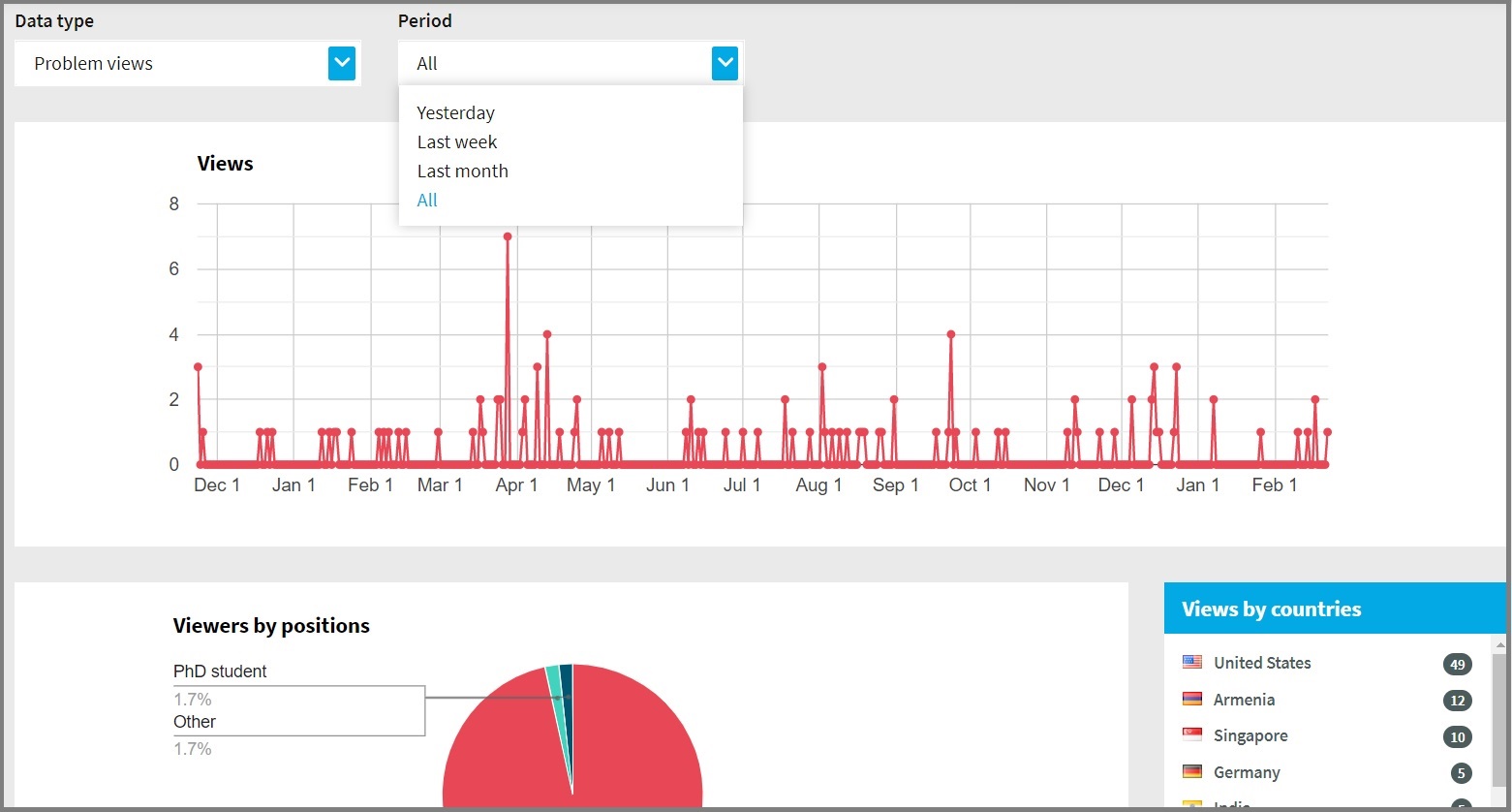
3. Posting a problem
Registered members of SciLag who had their accounts confirmed can post research problems. To create your post log in to your account and follow the red button on the top-right corner of the screen.

You will have an option to post a single problem or a group of problems. Choose the latter if you have several problems all sharing the same background (e.g. they were all formulated in the same paper).

Once you choose between single or a group post you will be redirected to the screen shown below. The process of posting a research problem is split into four steps, and you can move back and forth these steps at any time of the process. Our system periodically saves your work's current state in your Draft folder to avoid data loss. With the drafts, you may postpone the posting process when you wish and resume it later on.
3.1. Step 1 - basic data
The first step of posting a problem, as shown in the next screenshot, assembles the basic information about the problem, such as its title (TeX markup is supported), primary and secondary subjects (following arXiv.org), as well as the visibility of the post which determines its access level over the internet.
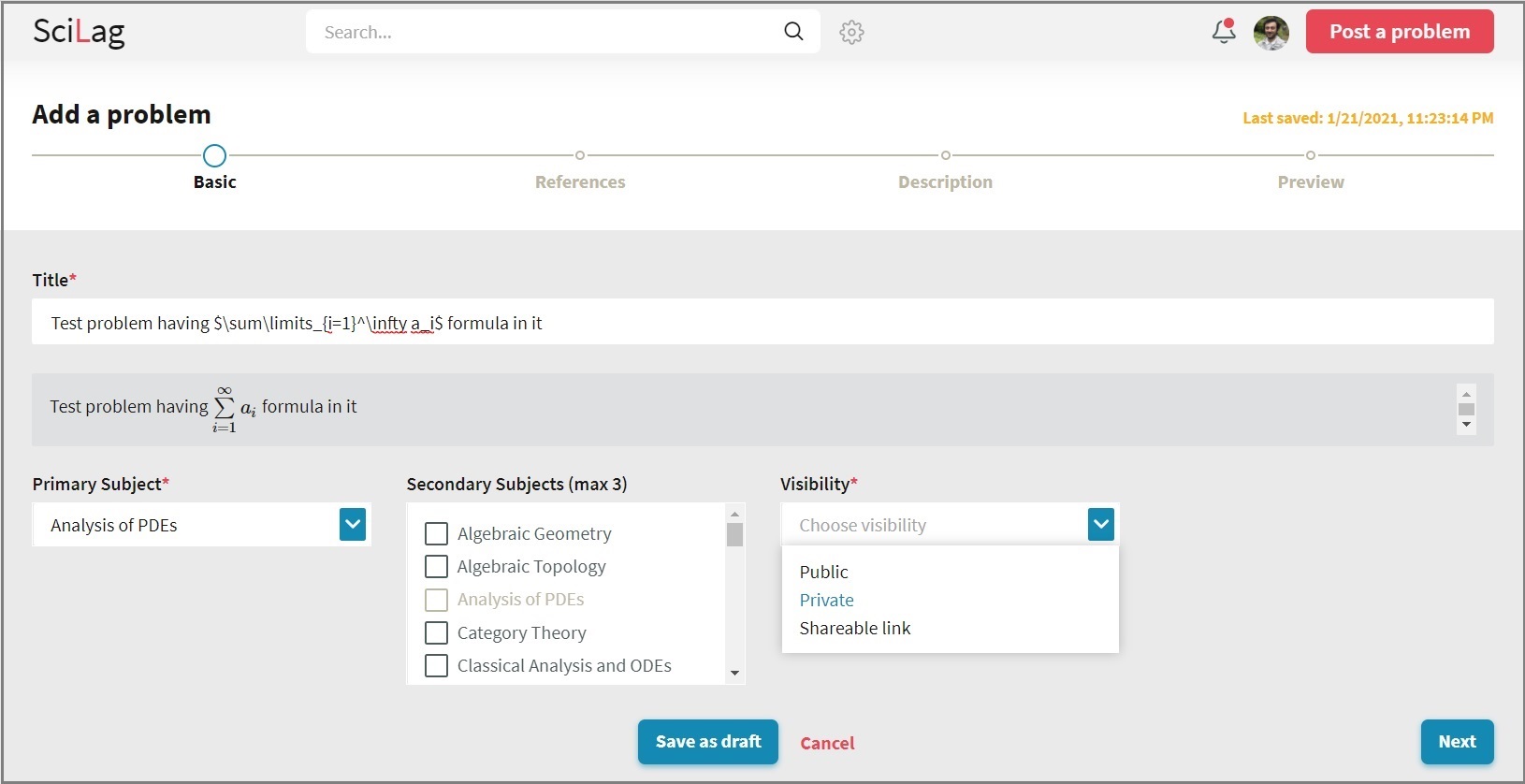
Set the visibility to private if you are drafting the post. Later on, you can change it to Shareable link status to still keep your work private but having a way to share it securely with your colleagues. The public visibility will make your post open to everyone, and this action cannot be revoked. The only way to abandon public posts is to withdraw them after posting, similar to what arXiv.org does with submitted articles.
3.2. Step 2 - bibliography
In the next step you will be asked to add references to the posted problem using the following interface.
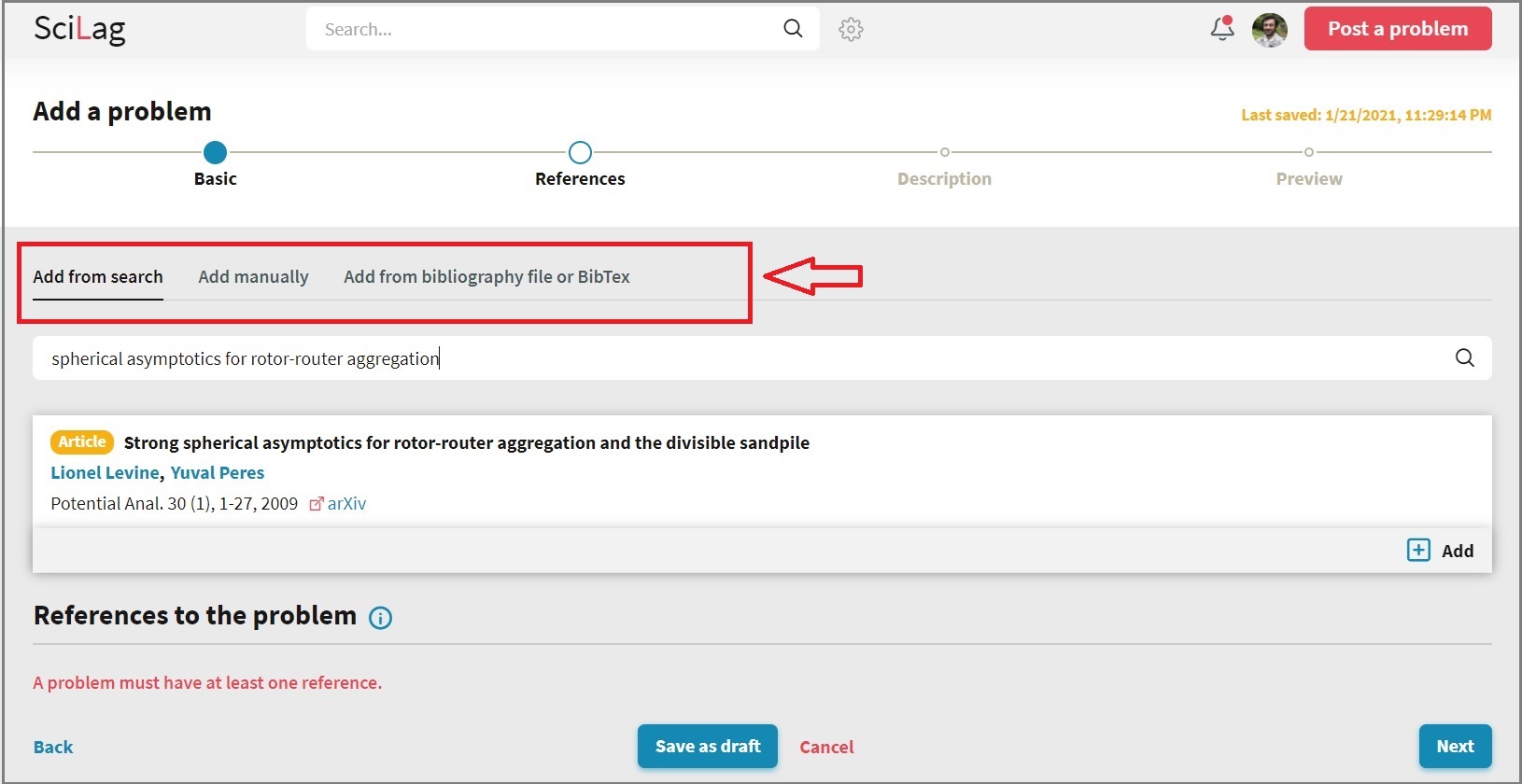
There are three ways of adding references to the problem as seen from the screen above: you can search our database of publications by keywords and add the bibliography item effortlessly if it appears on the search. Alternatively, you may fill in the details of a reference manually or use BibTex format to upload a bibliography list. The list of references will be arranged as follows
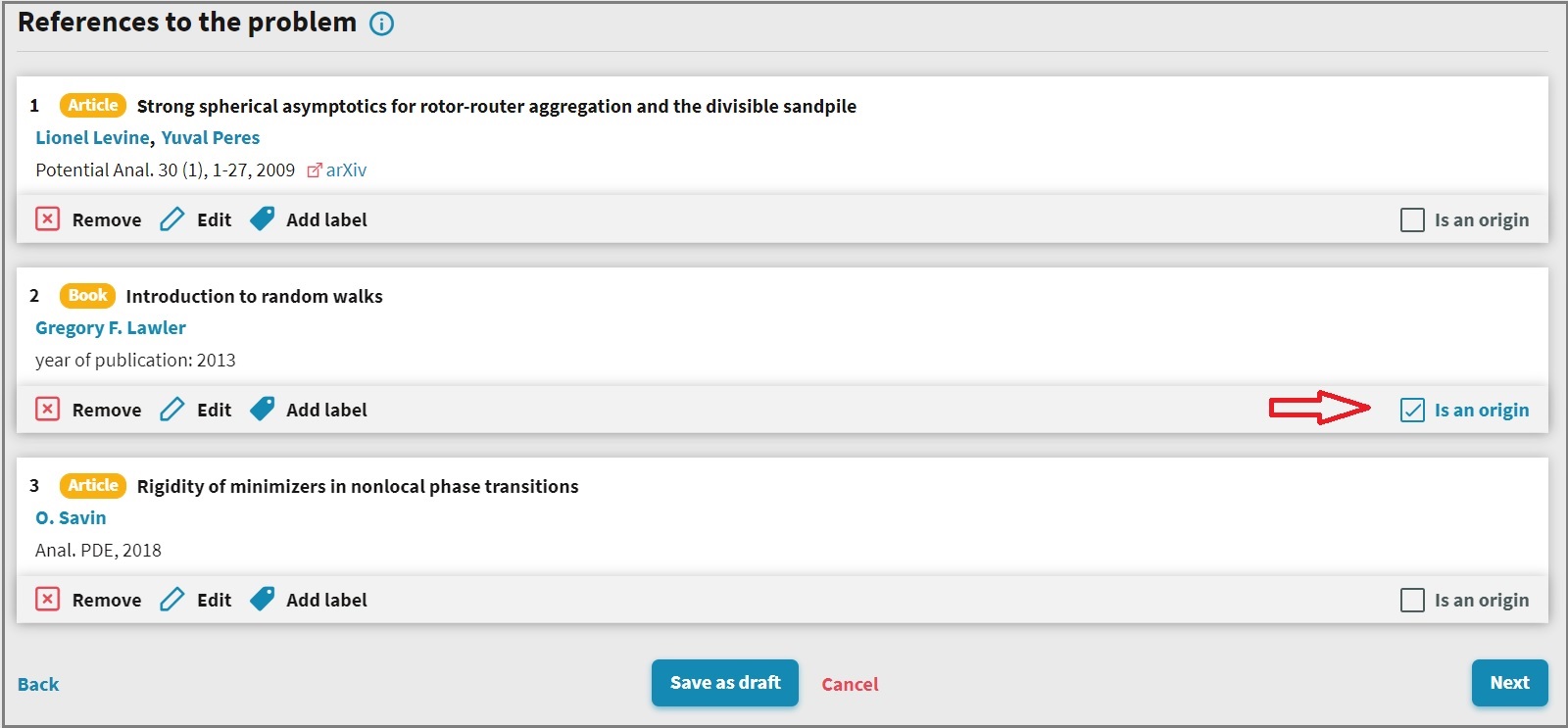
To rearrange the references you can hold a particular block by a mouse and move it to the desired position. You may also mark one or more references as Original meaning the problem to be posted originated in that reference(s). Also, you may add labels to each reference which can be used in the next steps for citing a particular reference in the description by its label the same way one does in TeX.
3.3. Step 3 - authors and formulation
With the bibliography ready the next step allows you to add the list of authors of the problem and its formulation (description).
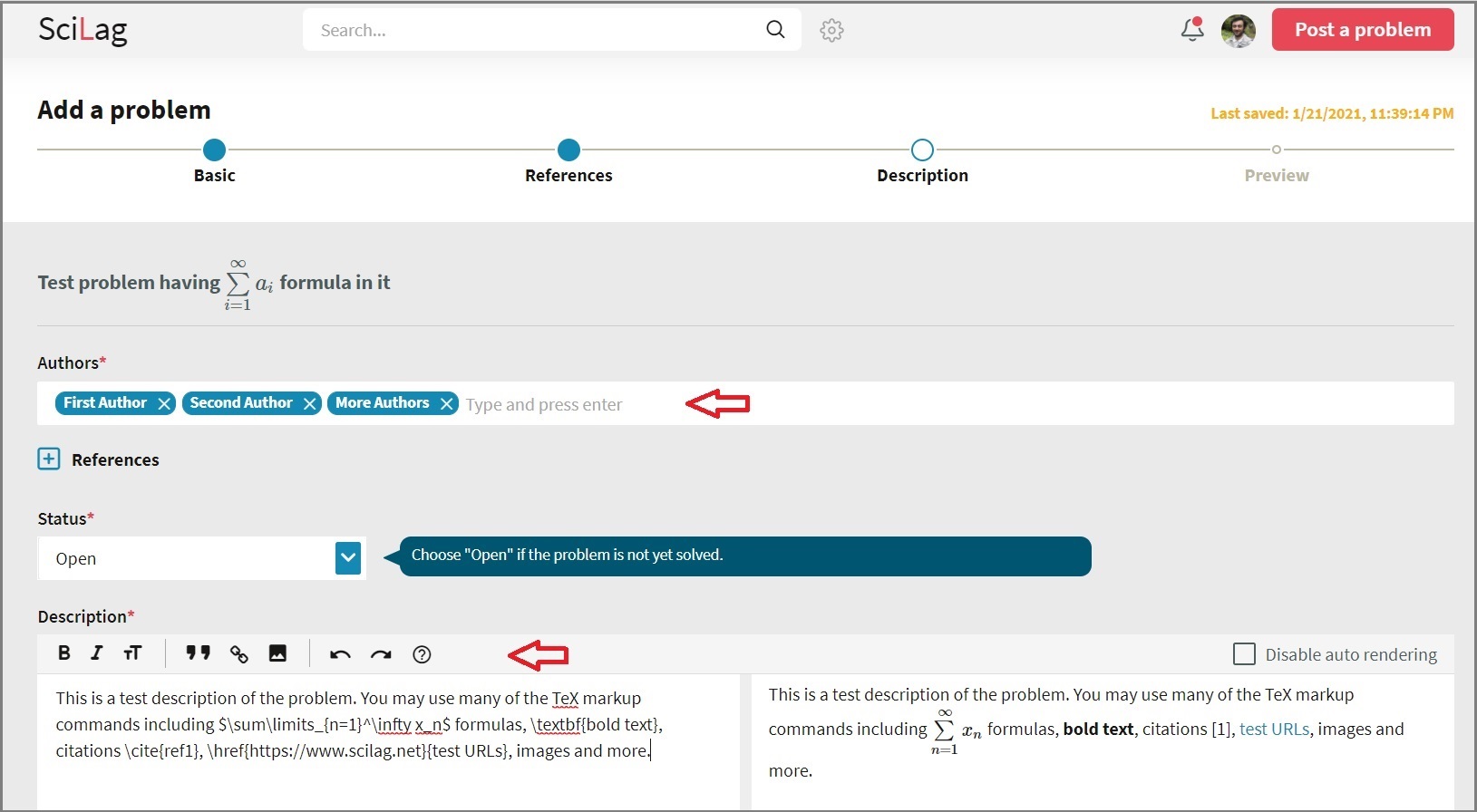
Based on the references marked as Original our system will suggest a list of authors which you can adjust as you please. In this step, you will also be asked to define the current Status of the problem and most importantly provide its description. For the latter, you will use our online editor which supports TeX, and where you may add images, hyperlinks, citations to the references added in the earlier stage, etc.
3.4. Step 4 - review and post
Moving to the last step of the posting process, you can review all the data that you provided in the earlier stages, add keywords and generate PDF (based on TeX engine) before you publish, privately or not, the problem (or a group of problems).
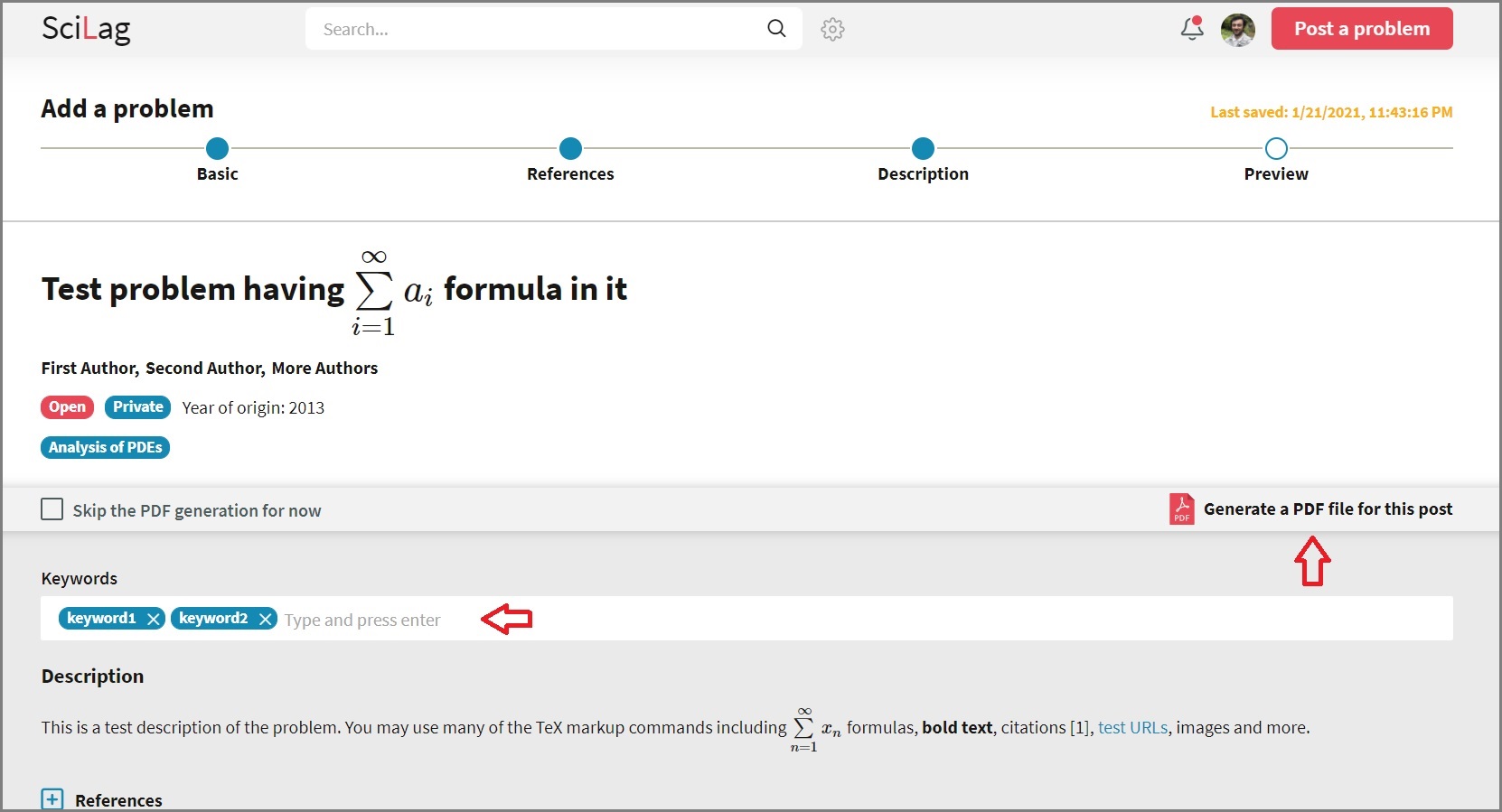
When you are ready, use the control buttons to either save your post in your Drafts to work on it later or publish it with the visibility chosen on the first step.

4. Posting a solution
Solutions are an integral part of the problem network. To post a solution to a particular problem open the problem's page and follow the Post a solution button.
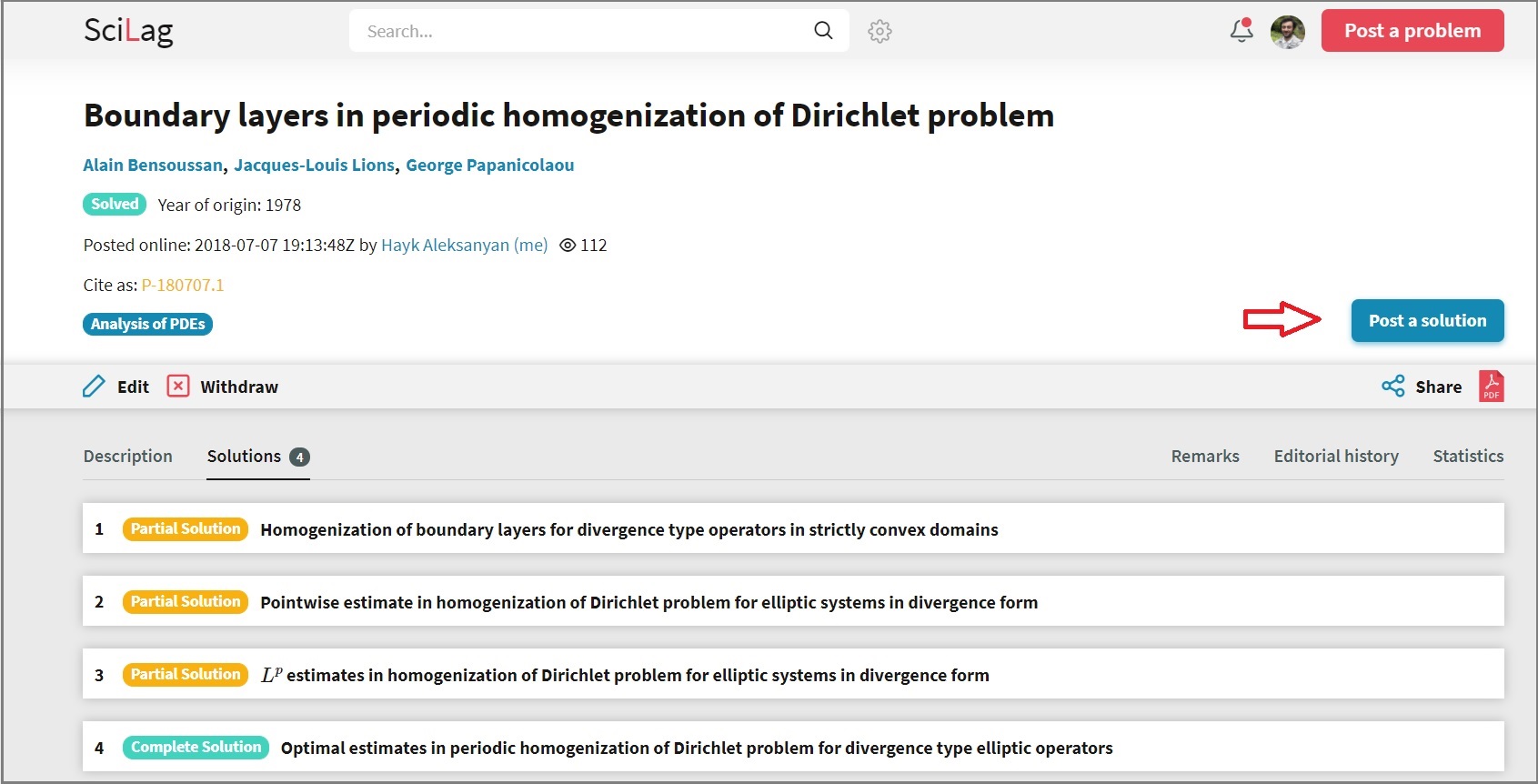
Solutions will appear on the homepage of the problem they refer to aligned in a tab called Solutions as seen above. The posting process is similar to that of a problem described above, and the details will be skipped.
5. Problem mining
Problem mining is an automated tool based on data of arXiv.org that periodically scans packets of full texts of papers hosted on arXiv and available through arXiv's bulk data access policy, to detect papers containing discussions on open problems or conjectures. It then creates a list from the detected papers putting together papers' descriptive data and some short snippets extracted from the full texts displaying information on open problems or conjectures presented in the paper. The papers appearing on this list are only references to the arXiv's versions, and we do NOT store the actual papers (TeX sources or PDFs) on our servers. To read any of the papers in this list one needs to follow the arXiv link displayed on the papers' blocks that look as follows.
You can search within the list using keywords, author names, and subject area.
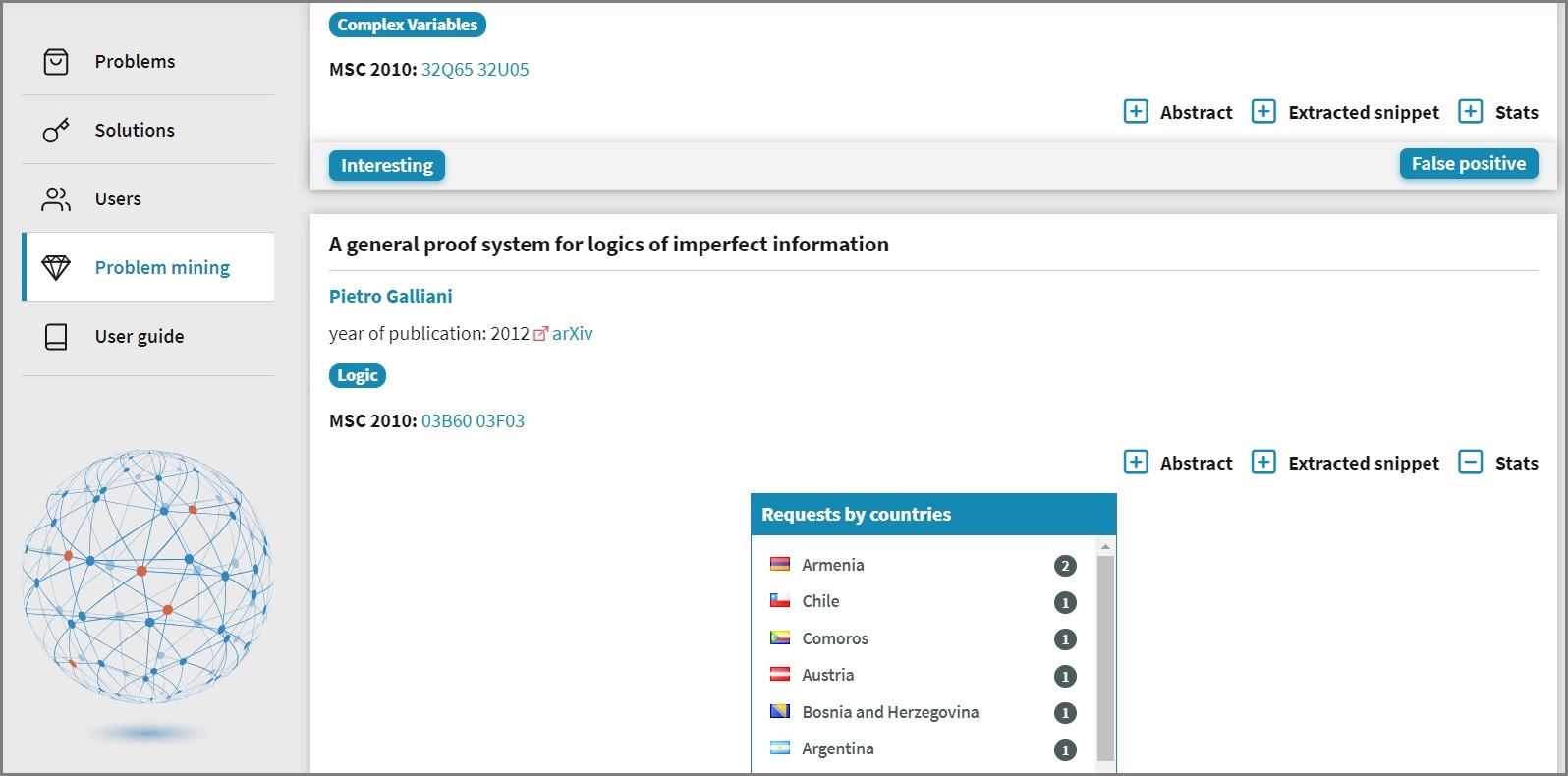
The statistics tab contains countries where the given article was marked as "Interesting" meaning the open problem or conjecture it described raised interest among the website's visitors. Such markings are anonymous. The Snippet tab as seen on the blocks shows the extracted text from the source of the paper where the problem or a conjecture was discussed, while the Abstract contains the abstract of the paper as included in the source.
Last updated on 22 January 2021